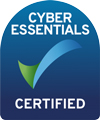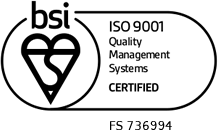Piezoelectric Standards
This page details some of the standards related activities for piezoelectric materials, mainly bulk ceramic types. Standards related purely to quartz have been omitted, in order to limit the size of the task.
The production of standards, particularly international ones, is a long and unrewarding business, and that they ever become standards is a tribute to the persistence of a small number of individuals. Consequently the existence or not of a standard in a particular area is not solely because of the need for such a standard, but is due to the concerted effort of these individuals. Also because of the need to keep documents current, if years after publication of a standard there is nobody prepared to maintain this document then there is a danger it will be withdrawn or cancelled. This situation is reflected in the piezoelectric materials standards area, where there are strong groups in Europe (CENELEC) and America (IEEE-UFFC), but some of the most quoted standards have recently been withdrawn (IEEE 176-1987, IEEE 180-1986, MIL-STD 1376B (SH)).
Standards organisations with Piezoelectric related standards
CENELEC is the European Committee for Electrotechnical Standardization and It has been officially recognised as the European Standards Organisation in its field by the European Commission in Directive 83/189/EEC.
A comprehensive series of piezoelectric standards are being developed for CENELEC under BTTF 63-2. There are two working groups in this committee and it is WG-2 that is producing standards related to piezoelectric materials, under the stewardship of Wanda Wolny. The first three have been approved and are available from the various national standards bodies. As with most standards within CENELEC there are English, French and German versions of these standards.
- EN 50324-1:2002 Piezoelectric properties of ceramic materials and components – Part 1: Definitions and Classifications
This standard relates to piezoelectric transducer ceramics for application both as transmitters and receivers in electroacoustics and ultrasonics over a wide frequency range. They are used for generation and transmission of acoustic signals, for achievement of ultrasonic effects, for transmission of signals in communication electronics, for sensors and actuators, and used for generation of high voltages in ignition devices.
Piezoelectric ceramics can be manufactured in a wide variety of shapes and sizes. Commonly used shapes include discs, rectangular plates, bars, tubes, cylinders and hemispheres as well as bending elements (circular and rectangular), sandwiches and monolithic multilayers.
- EN 50324-2:2002 Piezoelectric properties of ceramic materials and components – Part 2: Methods of measurement and properties – Low power
The methods of measurement described in this specification are for use with piezoelectric components produced from the ceramic materials described in EN 50324-1 “Definitions and classification”. Methods of measurement for specific dielectric, piezoelectric and elastic coefficients are generally applicable to piezoelectric ceramics.
The polycrystalline nature of ceramics, statistical fluctuations in composition and the influence of the manufacturing process, result in specified material coefficients being typical mean values. These values are provided for design information only.
Piezoelectric transducers can have widely differing shapes and may be employed in a range of vibrational modes. Material parameters however, are measured on simple test-pieces, (discs, rods) using specific geometric anmd electrical boundary conditions. Consequently, the results of the tests provide basic material parameters only and must be used as a guide to the actual properties of manufactured commercial components.
- EN 50324-3:2002 Piezoelectric properties of ceramic materials and components – Part 3: Methods of measurement – High power
This standard relates piezoelectric transducer ceramics for power application over a wide frequency range botha as electromechanical or mechanoelectrical converters.
This standard covers the large signal characterization of piezoelectric ceramics material only, and not the characterization of a complete assembled transducer.
The selection of a material for a given power application is difficult and the advice given in section 2 is mainly indicative.
- prEN 50ZZZ-1 (BTTF 63-2(CONV)12) Properties of multilayer actuators – Part 1: Terms and definitions
This European Standard relates to the definitions for Multilayer actuators. Their applications have been widely increased in various field of industry :
- mechanical engineering : tools positioning, clamps, active wedges, damping, active control, generation sonic or ultrasonic vibrations
- microelectronics : positioning of masks, wafers or magnetic heads, non magnetic actuation, circuit breakers
- fluids : proportional valves, pumps, ink jet, droplet generators, injectors
- optics : mirrors or lenses positioning, focusing, laser cavity tuning, alignment or deformation of fiber, scanners, choppers, interferometers, modulators
Multilayer actuators can be manufactured in a wide variety of sizes. The most common shape is the rectangular bar. Ring multilayer actuators exist also. The measurements under prestress apply to the stack actuators. This standard relates to “d33 actuators, which elongate in the direction of poling” and is limited to the static and quasistatic applications.
Unfortunately, for the community, this standard was never completed.
- prEN 50ZZZ-2 (BTTF 63-2(CONV)12) Properties of multilayer actuators – Part 2: Methods of measurement
This standard describes the measurement techniques, which can be applied to measure the properties of Multilayer Actuators, as defined in prEN 50ZZZ-1.
Multilayer actuators can be manufactured in a wide variety of sizes. The most common shape is the rectangular bar. Ring multilayer actuators exist also. The measurements under prestress apply to the stack actuators. This standard relates to “d33 actuators”, which elongate in the direction of poling” and is limited to the static and quasistatic applications.
Unfortunately, for the community, this standard was never completed.
- prEN 50PPP (BTTF 63-2(CONV)12) Properties of piezoelectric thick films
Unfortunately, for the community, this standard was never completed.
The IEC, the International Electrotechnical Commission is the international standards and conformity assessment body for all fields of electrotechnology. The standards are maintained by a series of technical committees that cover a narrow subject area. Most of the standards developed in the IEC are maintained and produced by TC49, Piezoelectric and dielectric devices for frequency control and selection. At present the only active work item related to piezoelectric ceramics seems to be a glossary, IEC 61994-4-2.
TC-49 Piezoelectric and dielectric devices for frequency control and selection
- IEC 60483 (1976-01) Guide to dynamic measurements of piezoelectric ceramics with high electromechanical coupling
- IEC 60302 (1969-01) Standard definitions and methods of measurement for piezoelectric vibrators operating over the frequency range up to 30 MHz
- IEC 60642 (1979-01) Piezoelectric ceramic resonators and resonator units for frequency control and selection – Chapter I: Standard values and conditions – Chapter II: Measuring and test conditions
- IEC 60642-2 (1994-02) Piezoelectric ceramic resonator units – Part 2: Guide to the use of piezoelectric ceramic resonator units
- IEC 60642-3 (1992-03) Piezoelectric ceramic resonators – Part 3: Standard outlines
- IEC 61253-1 (1993-12) Piezoelectric ceramic resonators – A specification in the IEC quality assessment system for electronic components (IECQ) – Part 1: Generic specification – Qualification approval
- IEC 61253-2 (1993-12) Piezoelectric ceramic resonators – A Specification in the IEC quality assessment system for electronic components (IECQ) – Part 2: Sectional specification – Qualification approval
- IEC 61253-2-1 (1993-12) Piezoelectric ceramic resonators – A specification in the IEC quality assessment system for electronic components (IECQ) – Part 2: Sectional specification – Qualification approval – Section 1: Blank detail specification – Assessment level E
- IEC 61261-1 (1994-03) Piezoelectric ceramic filters for use in electronic equipment – A specification in the IEC quality assessment system for electronic components (IECQ) – Part 1: Generic specification – Qualification approval
- IEC 61261-2 (1994-03) Piezoelectric ceramic filters for use in electronic equipment – A specification in the IEC quality assessment system for electronic components (IECQ) – Part 2: Sectional specification – Qualification approval
- IEC 61261-2-1 (1994-03) Piezoelectric ceramic filters for use in electronic equipment – A specification in the IEC quality assessment system for electronic components (IECQ) – Part 2: Sectional specification – Qualification approval – Section 1: Blank detail specification – Assessment level E
- IEC 61994-4-2 TS Ed. 1.0 B 1CD Piezoelectric and dielectric devices for frequency control and selection – Glossary – Part 4-2: Piezoelectric materials – Piezoelectric ceramics
TC-87 Ultrasonics
- IEC 61088 (1991-09) Characteristics and measurements of ultrasonic piezoceramic transducers
Specifies the essential electroacoustic characteristics of piezoceramic transducers for industrial application of ultrasonic energy. Also specifies the methods of measuring these characteristics. It has the status of a technical report.
SC-47E Subcommittee 47E: Discrete Semiconductor Devices
- IEC 60747-14-1 (2000-10) Semiconductor devices – Part 14-1: Semiconductor sensors – General and classification
Describes general items concerning the specifications for sensors which are basically made of semiconductor materials, but also applicable to sensors using dielectric or ferroelectric materials.
The IEEE-UFFC is the Ultrasonics, Ferroelectrics and Frequency Control Society of the Institute of Electrical and Electronics Engineers. The IEEE published some of the most quoted standards related to piezoelectric and ferroelectric materials, including
- 176-1987 IEEE Standard on Piezoelectricity
- 180-1986 IEEE Standard Definitions of Primary Ferroelectric Electric Terms
Both these standards have been withdrawn by the IEEE although they are still available from some sources as a historical document.
There are currently two active groups working under the IEEE-UFFC auspices
- IEEE Subcommittee on Loss in Acoustic Materials:
Standards on Characterization of Losses in Electromechanical Materials coordinated by Dr Stewart Sherrit (JPL). The aim is to develop new ways of analysing loss through use of complex impedance and to write new IEEE standard based on the analysis.
- A Draft of the IEEE standard on Ferroelectricity
This is a definition of terms for ferroelctrics and is being developed by Susan Trolier-McKinstry. A draft of this standard has recently been published in the IEEE-UFFC journal.
The US military have specifications and standards relating to the supply of goods for use in defence, including the following standard
- MIL-STD 1376B (SH) Piezoelectric Ceramic Material and Measurements – Guidelines for Sonar Transducers
This standard was cancelled in 1999. It is still widely referred to as the source of of the various Navy types for piezoelectric materials.
- Committee on Standard Protocols for Single Crystal Piezoelectrics
This is coordinated by Dr Lynn Ewart-Paine (NUWC) on behalf of Dr Wallace Smith – ONR and is aimed at producing a protocol for the calculation of the dielectric constant and piezoelectric coefficients for piezoelectric single crystals.
VAMAS is the Versailles Project on Advanced Materials and Standards and supports world trade in products dependant on advanced materials technologies, through International collaborative projects aimed at providing the technical basis for harmonized measurements, testing, specifications, and standards.
The pre-standards research activities of VAMAS are organized into technical committees called Technical Working Areas (TWAs) which are approved by the a steering committee and led by International Chairmen. A recent technical working area, TWA 24 Performance Related Properties for Electro-Ceramics is chaired by Dr Markys Cain, and there are a number of proposed projects in this area directly related to piezoelectrics.
One VAMAS project – An International Intercomparison of Direct Piezoelectric Coefficient using the Berlincourt Method, was concluded in 2012. The objective was to determine the experimental variability in the measurement of the piezoelectric coefficient of electroceramic materials via the standard method described as the Berlincourt Method. See the TWA 24 home page for more details.
- The VAMAS was hosted at NPL.
The Electronic Industries Alliance (EIA) is a national trade organization that includes the full spectrum of US manufacturers, representing more than 80% of the electronics industry. There are some standards related to multilayer capacitors, including
- EIA 521 Application Guide for Multilayer Ceramic Capacitors- Electrical
Summary This document covers capacitor classes I-IV. Definition of important terms are included. Factors influencing performance as temperature, voltage (a.c. and d.c.), temperature-voltage, ageing, and frequency are discussed in detail. Other topics as piezoelectric properties, corona, dielectric absorption, reliability, and applications are described extensively.
Japanese Standards
It has been difficult to find authoritative information on Japanese standards related to piezoelectric materials, but I am indebted to Takashi Takahashi, of the Japanese Fine Ceramics Association for the following information.
JISC (Japanese Industrial Standards Committee)
The JISC consists of many national committees and plays central role in standardization activities in Japan. In essence, the role of the JISC can be summarized as follows;
- Establishment and Maintenance of JIS
- Administration of Accreditation and Certification
- Participation and Contribution in International Standardization Activities
- Development of Measurement Standards and Technical Infrastructure for Standardization
There are many standards (JIS: Japanese Industrial Standards) that are concerned with quartz resonators, but no national standards for piezoelectric ceramics or single crystals.
The Japan Electronics and Information Technology Industries Association (JEITA) is a not-for-profit organization that develops and publishes voluntary consensus standards for electronic devices, including piezoelectric ceramic devices.
They have published following relevant standards that are only available in Japanese (NB: the translation may not be exact):
EMAS-6100 Electronic test methods for the characterisation of piezoelectric ceramic oscillators
This is a very comprehensive document covering the determination of piezoelectric properties at low field using the classic resonance technique.
EMAS-6008 Test method for mechanical performance and Chemical Resistance.
This standard covers the mechanical inspection, including mechanical 3 point bend tests, and resistance to chemical attack and performance in various humid environments.
Standards organisations with no active content related to piezoelectric materials
ANSI, the American National Standards Institute, is a private, non-profit organization that administers and coordinates the US voluntary standardization and conformity assessment system.
ANSI is the official US representative to the International Accreditation Forum (IAF), the International Organization for Standardization (ISO) and, via the US National Committee, the International Electrotechnical Commission (IEC). As a result the most of the piezoelectric related work is already covered in the IEC standards.
The International Organization for Standardization (ISO) is a worldwide federation of national standards bodies from some 140 countries, one from each country. ISO is a non-governmental organization established in 1947. The mission of ISO is to promote the development of standardization and related activities in the world with a view to facilitating the international exchange of goods and services, and to developing cooperation in the spheres of intellectual, scientific, technological and economic activity. ISO’s work results in international agreements which are published as International Standards.
CEN, the Comité Européen de Normalisation (European Committee for Standardization), promotes voluntary technical harmonization in Europe in conjunction with worldwide bodies and its partners in Europe. In Europe, CEN works in partnership with CENELEC.
Organized in 1898, ASTM (the American Society for Testing and Materials) is one of the largest voluntary standards development organizations in the world. ASTM is a not-for-profit organization that provides a forum for the development and publication of voluntary consensus standards for materials, products, systems and services.
The standards involving piezoelectric materials produced by this organisation are mainly related to their use as acoustic emission sensors, and there are no standards directly related to the performance of piezoelectric materials or devices. There are however a couple of standards relevant to piezoelectric materials measurement
- ASTM D 150-98 ‘Standard test methods for AC loss characteristics and permittivity (Dielectric Constant) of solid electrical insulation’.
- ASTM D149-97a ‘Standard Test Method for Dielectric Breakdown Voltage and Dielectric Strength of Solid Electrical Insulating Materials at Commercial Power Frequencies’
Note: The information in this document is based on information written by the author reproduced and updated with permission from NPL and other sources. If there are any errors or omissions that you think should be included, please contact us.



